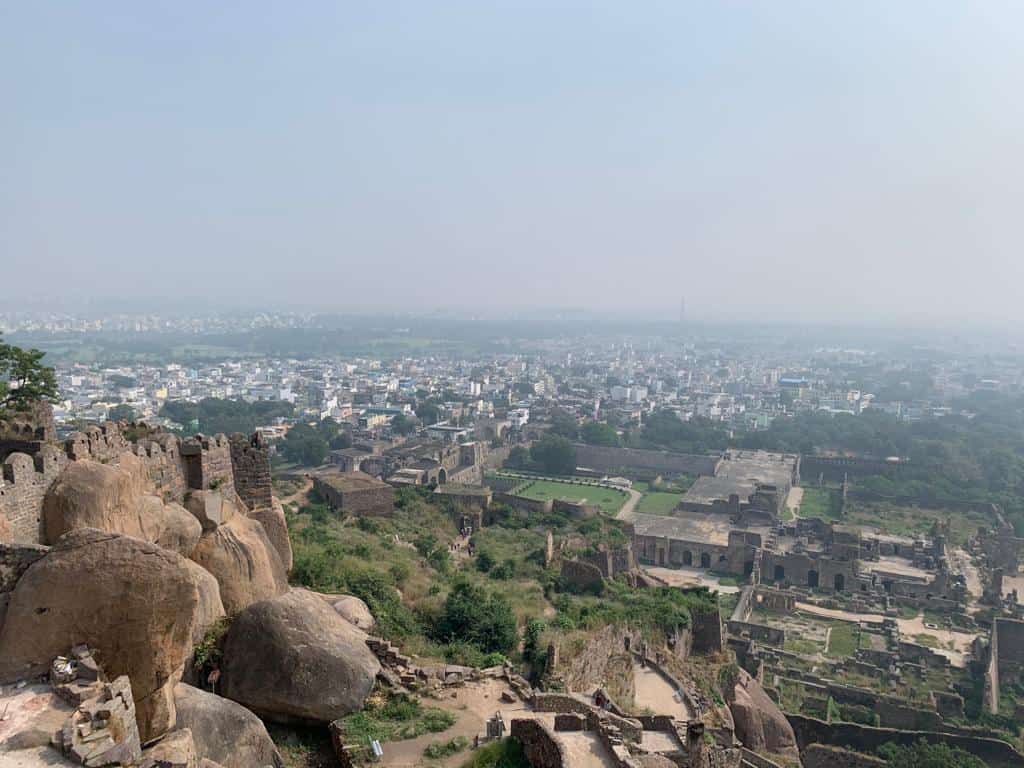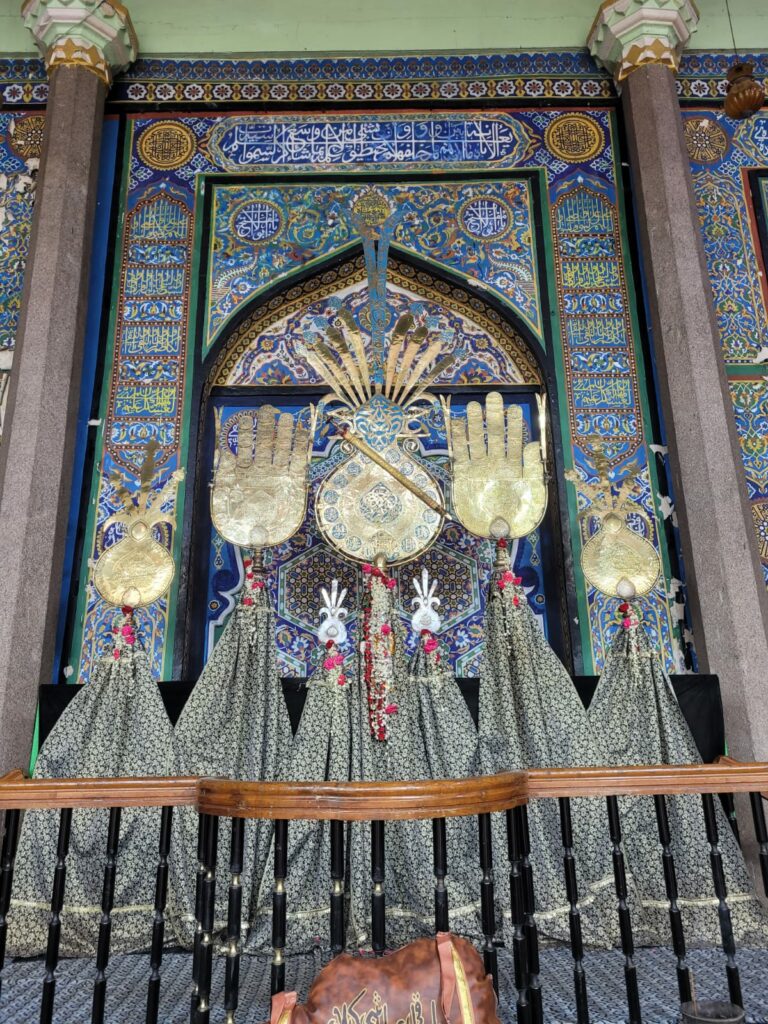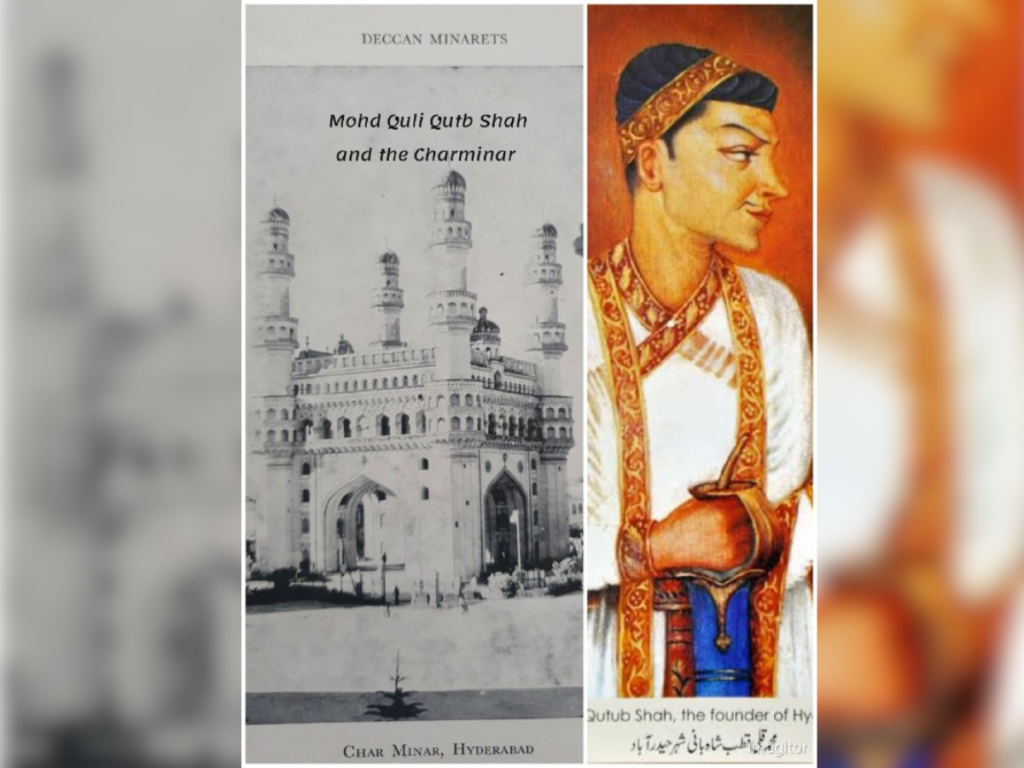[ad_1]
Hyderabad: Most cities in the world, especially great civilisations, revere their founders and make it a point to remember them. But our city seems to be an exception, given that in popular culture the metropolis is known today for pearls, and is associated with the Nizams, who in fact had nothing to do with the foundation of Hyderabad.
It is to correct that wrong, or rather our forgetfulness as grateful citizens of Hyderabad, that we should remember our founder Mohammed Quli Qutb Shah, who laid the foundations of our city in 1591. Born on April 4, 1566, he was the fourth king of the Golconda dynasty that existed from 1518 to 1687. It is only fit that we remember him for having the vision to build a new city, which would eventually go on to have over four centuries of continuous history.
The Charminar, which is the first monument built to mark the new city of Hyderabad, today is world famous and still stands as an example of the grandeur that Hyderabad was surrounded with right from its foundations. It may be noted that Mohammed Quli is rather more known for his association with the legend of his lover Bhagmati.
Much before Hyderabad was built by Mohammed Quli Qutb Shah, it was his grandfather Sultan Quli who settled in Telangana after migrating from Hamadan (Iran) in the late 15th century. The Golconda fort in Hyderabad was a walled city from which the first three Qutb Shahi kings ruled.
The Golconda Fort’s origins are traced back to the 14th century when the Rajah of Warangal Deo Rai (under the Kakatiya Kingdom which ruled from Warangal) built a mud fort, which was later taken over the Bahamani empire between (1358-75). It was later developed into a full-fledged citadel by Sultan Quli, who founded the Qutb Shahi (or Golconda) kingdom in 1518, when the last sovereign Bahamani emperor Mahmud Shah Bahamani died.

Prior to that, Sultan Quli was a commander and later governor of Tilang (Telangana), under the Bahamani empire (1347-1518), when its second capital was at Bidar. Sultan Quli had risen to the level of governor under the Bahamanis. At this point of time he was given the fort, which he began developing into a walled-city. It eventually came to called Golconda Fort (name derived from Golla-conda, or shepherds hill).
Sultan Quli’s youngest son Ibrahim Qutb Shah was the third monarch of the Qutb Shahi kingdom. Mohammed Quli was one of the younger ones Ibrahim had with his wife named Bhagirathu. Mohammed Quli eventually would would become the fourth king in 1580 after his father died. The young monarch would decide to move out of the Golconda fort in 1591 due to a host of reasons, including the lack of infrastructure or lack of space inside the fort.
The Golconda fort was historically famous for its diamond markets, and trade. Diamonds were historically mined in the Andhra region (then under the Golconda empire), and were sold in the fort’s markets, and later in Hyderabad.
New City
When Mohammed Quli Qutb Shah founded Hyderabad city in 1591, it was designed with grand edifices and fueled by global trade. The city’s centrepiece undoubtedly was the Charminar, built as the foundational monument. We know for a fact that aside from the Charminar and other monuments that towered the new city of Hyderabad (built after Mohammed Quli Qutb Shah decided to move out of the walled-city of Golconda), the main area or the Bazars were what attracted foreign merchants alike in the 16th and 17th centuries.
In fact, one of the handful of structures from Mohammed Quli’s period that remains today is the Badshahi Ashurkhana. It was built a year after the Charminar in 1592, and is a Shia Muslim place of mourning for remembering the martyrdom of Imam Hussain. The Qutb Shahi kings were also orthodox Shias.

Apart from Indian traders, Mohammed Quli Qutb Shah’s Hyderabad drew Persian, Armenian, Portuguese and British traders. The French traveller Monsieur Thevenot in fact gives us a glimpse of what Hyderabad was like under its sixth king Sultan Abdullah Qutb Shah (1626-72).
An excerpt from his travelogue tells us what he thought of Hyderabad (which he called Bagnagar) then: “The gardens without the Town are the loveliest, and I shall only describe one of them, that is reckoned the pleasantest of the kingdom. At first, one enters into a great place called the first Garden; it is planted with Palms and Areca trees, so near to one another that the sun can hardly pierce through them.”
“The Tradesmen of the Town, and those who cultivate the Land, are Natives of the Country. There are many Franks also in the Kingdome, but most of them are Portuguese who have fled for Crimes they have committed: However the English and Dutch have lately setled there, and the last make great profits,” wrote Thevenot of his travels to Hyderabad.
Mohammed Quli in fact wrote in Dakhni, the language which is spoken in the Deccan, and which is often mistaken as Urdu. He was a Dakhni poet, who compiled thousands of lines in his lifetime. He has written about 50000 or more lines of poetry.
Charminar – As architectural masterpiece and Mohd Quli’s legacy
Undoubtedly, to this day, the Charminar is still Hyderabad’s main attraction. It’s intricate designs and magnificence can’t be easily paralleled in the Deccan or even the country easily. It is after all the foundation of Hyderabad. It also reflects the globalisation of the 16th century in the Deccan.
Apart from its Persian and local influences in terms of design, the Charminar also has pineapple motifs on it. The fruit was imported to the Deccan via trade with the Portuguese (who brought it from Brazil originally). Aside from that, it also has Shirdal (or griffins) motifs in its central arcade.

Many also often mistake the Charminar to be a religious monument, but that is not the case. The first mosque of Hyderabad is the Jama Masjid that is just across the monument. The Charminar is exactly what it is meant to be – a monument for the city. Historian HK Sherwani also points out that what’s believed to be a mosque on the second floor was originally used as a school or seminary for both Hindus and Muslim children.
All in all, regardless of religious or political affiliations, it is the least that we as a city can do to remember our founder Mohammed Quli, without whom Hyderabad would not have existed.
Unfortunately today we do not know how does the city looked like thanks to the Mughals, who under Aurangzeb destroyed most of the original structures, including palaces, in 1687 over an eight month long battle. We have only an idea of the grandeur thanks to history books and whatever remains from what Mohammed Quli and the Golconda kings built.
[ad_2]
#Remembering #Mohammed #Quli #Qutb #Shah #founder #Hyderabad
( With inputs from www.siasat.com )
